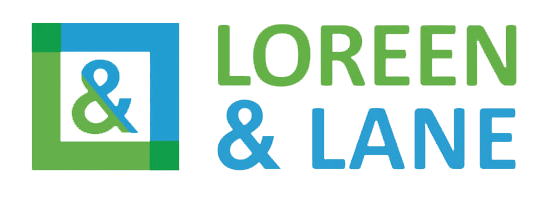Medicare is a federal health insurance program in the United States that primarily covers people who are 65 years and older, individuals with certain disabilities, and people with End-Stage Renal Disease (ESRD). The Medicare Part D Prescription Drug Benefit is a program that provides prescription drug coverage for Medicare beneficiaries. Medicare Part D is a voluntary program that was created in 2003 under the Medicare Modernization Act (MMA) and became effective on January 1, 2006. This article provides an overview of the Medicare Part D Prescription Drug Benefit, including its history, enrollment, coverage, costs, and challenges.
History of Medicare Part D
Before the enactment of the Medicare Modernization Act (MMA), Medicare beneficiaries did not have prescription drug coverage. However, some beneficiaries had access to drug coverage through Medicaid, employer-sponsored plans, or private insurance. The lack of prescription drug coverage was a significant gap in Medicare, and it resulted in beneficiaries paying high out-of-pocket costs for their medications. The high cost of drugs was particularly problematic for beneficiaries with chronic conditions such as diabetes, heart disease, and cancer.
The MMA was signed into law on December 8, 2003, by President George W. Bush. The law created the Medicare Part D Prescription Drug Benefit, which provided Medicare beneficiaries with access to prescription drug coverage. The program was designed to be administered by private insurance companies that contracted with Medicare. The MMA also established the Medicare Advantage program, which allowed beneficiaries to receive their Medicare benefits through private health plans.
Enrollment in Medicare Part D
Enrollment in Medicare Part D is voluntary, but there are penalties for not enrolling when first eligible. Medicare beneficiaries are eligible for Part D coverage if they are enrolled in Medicare Part A or Part B. Beneficiaries can enroll in Part D during their Initial Enrollment Period (IEP), which is the seven-month period that begins three months before their 65th birthday and ends three months after their birthday. They can also enroll during the Annual Enrollment Period (AEP), which occurs from October 15 to December 7 of each year. During AEP, beneficiaries can switch from one Part D plan to another, or from Original Medicare to a Medicare Advantage plan that includes drug coverage.
Coverage under Medicare Part D
Medicare Part D plans are required to provide coverage for a minimum set of drugs known as the “formulary.” The formulary is a list of drugs that the plan covers and is divided into tiers, with each tier representing a different cost-sharing amount. The formulary must include at least two drugs in each therapeutic category and class, and it must cover all drugs in six “protected classes”: anticonvulsants, antidepressants, antineoplastics, antipsychotics, immunosuppressants, and antiretrovirals.
The cost-sharing structure of Medicare Part D varies depending on the plan. All Part D plans have a deductible, which is the amount that the beneficiary must pay before the plan starts covering their medications. Once the deductible is met, the plan pays a portion of the cost of each medication, and the beneficiary pays the remaining portion in the form of a copayment or coinsurance. The cost-sharing amounts vary based on the tier of the medication, with lower tiers having lower cost-sharing amounts.
The Medicare Part D program includes a coverage gap known as the “donut hole.” The donut hole is a period during which beneficiaries are responsible for a larger share of their medication costs. In 2022, the coverage gap begins once the beneficiary and their plan have spent a combined total of $4,430 on medications, and it ends when the beneficiary’s out-of-pocket costs reach $7,050. During the donut hole, beneficiaries are responsible for 25% of the cost of brand-name drugs and 37% of the cost of generic drugs, until they reach the out-of-pocket limit.
After the out-of-pocket limit is reached, beneficiaries are eligible for catastrophic coverage. Under catastrophic coverage, the beneficiary pays a small copayment or coinsurance for each medication, and the plan pays the rest. The cost-sharing amounts for catastrophic coverage are significantly lower than during the initial coverage period and the donut hole.
Costs of Medicare Part D
The cost of Medicare Part D varies depending on the plan and the beneficiary’s income. The average monthly premium for a Part D plan in 2022 is $35.68. However, some plans have premiums as low as $7.60, while others have premiums as high as $120.60. In addition to the monthly premium, beneficiaries are responsible for the deductible, cost-sharing amounts, and any medications that are not covered by their plan.
Beneficiaries with higher incomes may be subject to a higher Part D premium. The income thresholds for higher premiums in 2022 are $91,000 for individuals and $182,000 for married couples filing jointly. Beneficiaries who are subject to higher premiums pay an additional amount on top of the standard premium, which ranges from $12.70 to $76.40 per month, depending on their income.

Challenges with Medicare Part D
One of the biggest challenges with Medicare Part D is the complexity of the program. There are many Part D plans available, each with different formularies, cost-sharing amounts, and premiums. This can make it difficult for beneficiaries to choose the plan that best meets their needs.
Another challenge with Medicare Part D is the cost of medications. Although Part D provides coverage for prescription drugs, the cost of drugs can still be prohibitively high for many beneficiaries. The high cost of drugs can also lead to medication non-adherence, which can result in poorer health outcomes and higher healthcare costs in the long run.
Conclusion
The Medicare Part D Prescription Drug Benefit is an important program that provides Medicare beneficiaries with access to prescription drug coverage. The program has helped to alleviate the financial burden of prescription drugs for many beneficiaries. However, there are still challenges with the program, including its complexity and the high cost of medications. As the population ages and healthcare costs continue to rise, it will be important to address these challenges to ensure that Medicare beneficiaries have access to affordable and effective prescription drug coverage.
If you or a loved one are struggling to navigate the complex world of Medicare Part D prescription drug coverage, know that you’re not alone. The Medicare Answer Team is here to help. Our team of licensed agents can help you find a plan that suits your needs and budget, and answer any questions you may have about Medicare or other insurance options.
Don’t let confusion or high costs stand in the way of accessing the medications you need to stay healthy. Contact the Medicare Answer Team today to learn how we can assist you in finding the right prescription drug coverage for you.

